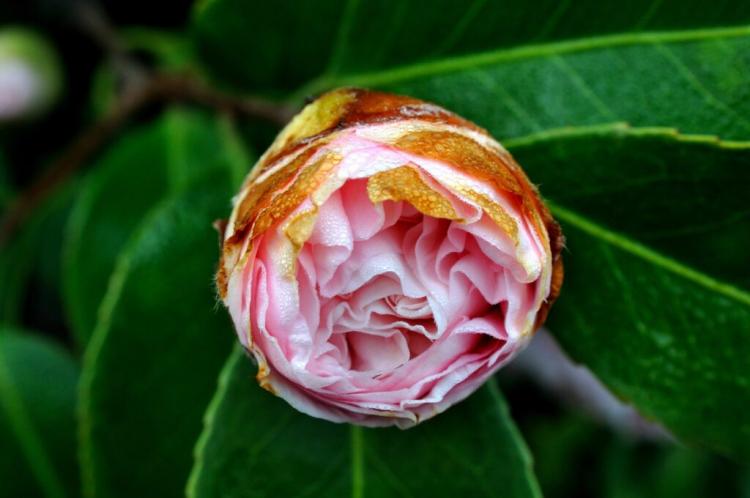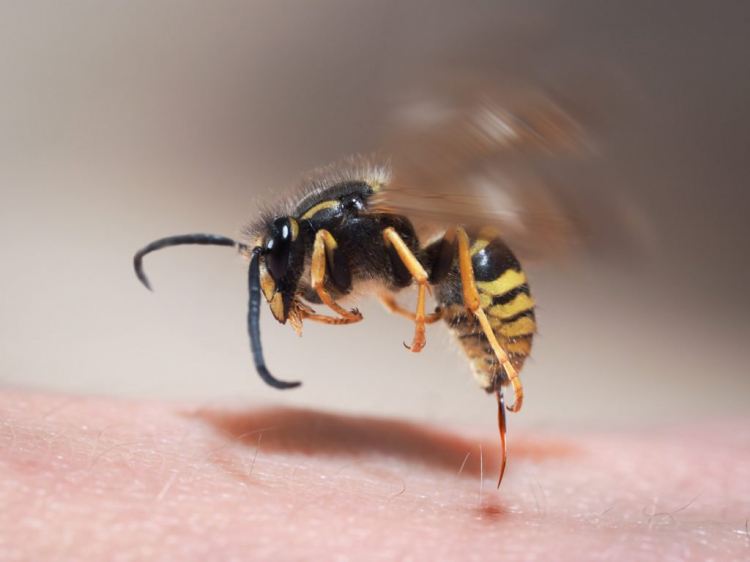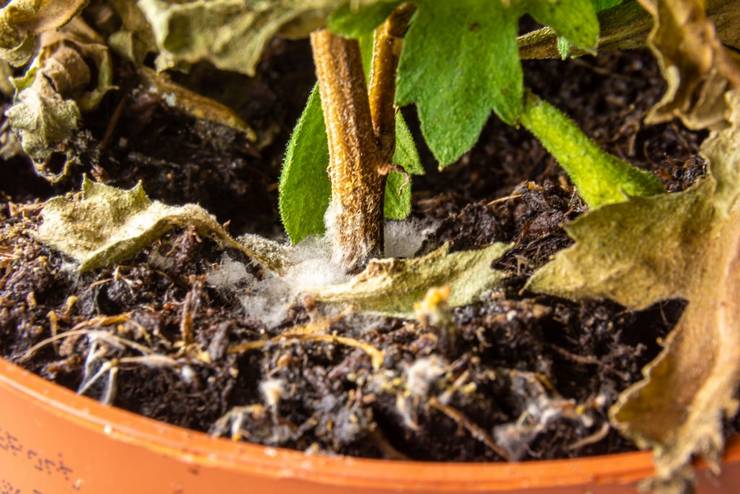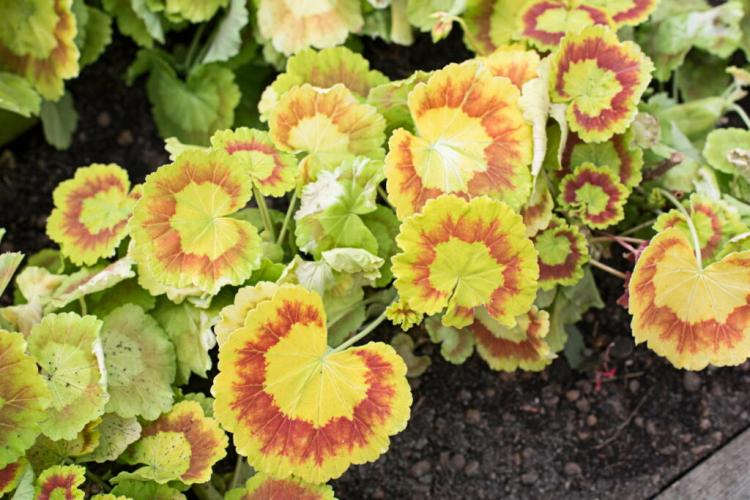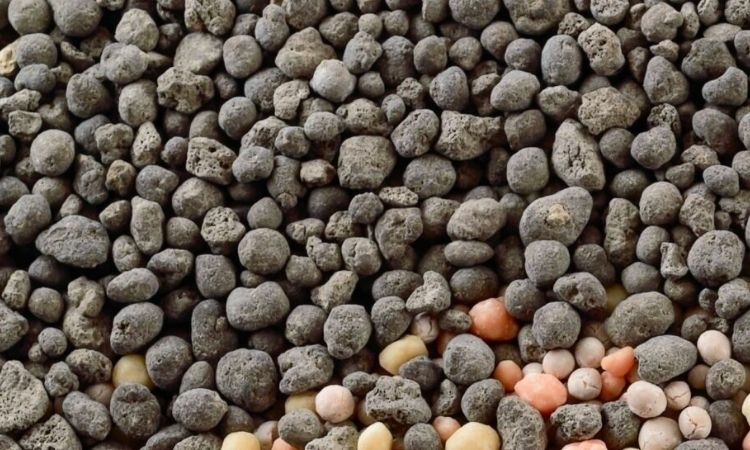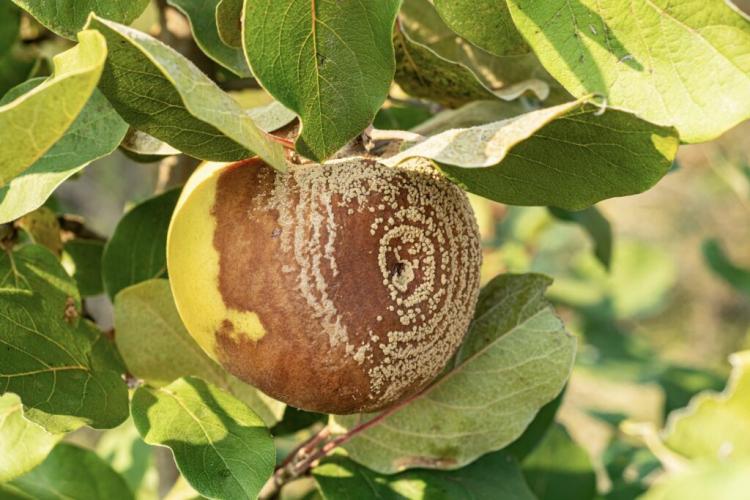Camellia Diseases: Recognizing, Fighting & Preventing
Camellia japonica is a real eye-catcher in the garden, but just as susceptible to some pests. We show you how to recognize sick camellias. The camellia ( Camellia ) is a relatively robust potted plant. If you should ever let your leaves or flowers droop, or have other lesions, it is usually because something went wrong with the care. We’ll tell you how such mistakes can be avoided and which pests and diseases pose a threat to the camellia.
Camellia: Animal pathogens
Table of Contents
Which animal pathogens can make life difficult for your camellias can be found below, as well as tips for effective control.
Thrips ( Thysanoptera )
Also known as the fringed wing, thrips are tiny pests that are sometimes barely noticeable to the naked eye. It primarily attacks indoor plants, so it is a problem for the camellia in winter. The damage usually manifests itself in silvery, brown to black lesions on buds, leaves, and green shoots, which are caused by the laying of eggs and the excretions of the thrips.
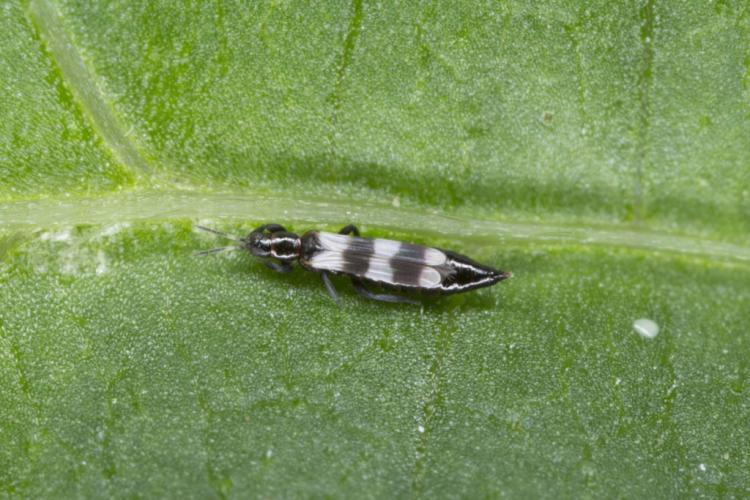
To control: The control of thrips is relatively easy. In some cases, just spraying the plant with soapy water is enough to scare off the thrips. If the infestation is not too strong, you can just sit out the problem. The thrips often cannot cope with the conditions outside the house, which is why the pest infestation regulates itself when the camellia is put out again.
Caution: Although the thrips are easy to control, they can survive in the ground in pupated form. Under certain circumstances, this can lead to large populations, which could later cause bigger problems. Thrips infestation is more of a problem, especially in commercial cultivation.
You can find more information on getting rid of thrips here.
Scale insects ( Coccoidea )
The small, relatively flat-looking lice belong to the phloem-sucking insects and damage your camellia by pricking their proboscis. Just like thrips, they are predominantly a problem in indoor or container plants. Scale insects prefer the softer undersides of the leaves to suckle on the sugary sap. Sticky honeydew is a sure sign of scale insect infestation.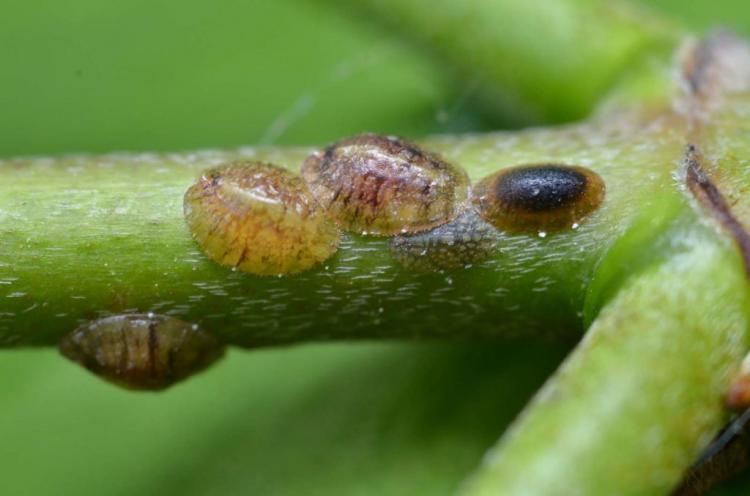
To combat: In the case of scale insects, it is more effective to prevent an infestation by taking the appropriate measures than to react to it later. So keep your camellia in good health and ensure optimal conditions. If the infestation is light, the small animals can still be collected, but this is hardly possible if the infestation is more severe. In the event of severe infestation, there are both organic and conventional pesticides on the market that can help.
Black vine weevil ( Otiorhynchus )
The black weevil damages the camellias in two ways: on the one hand, the adult beetles tamper with the leaves by eating their edges; on the other hand, their larvae are often found in the shallow soil of the tubs and damage the roots there. So if you see leaf damage, it is very likely that the soil in the pot is also infested with black weevil larvae.

To combat it: normally weevils only cause damage that your camellia can compensate for in a healthy state. However, if yellow leaves and limp-looking shoots appear, you can consider plant protection treatment. Note: Carry out the treatment in the dark or poor light conditions, as the black weevil avoids the light.
Camellia: fungal pathogens
A fungal pathogen can also harm your camellias. You might so read: Powdery Mildew On Roses: Identifying And Combating Powdery Mildew And Downy Mildew
Camellia plague ( Sclerotinia camellia )
The camellia plague was previously only widespread in Asia. For a short time, it has been up to mischief in Europe too. The infestation by the harmful fungus manifests itself in the flowers, which start to rot from the inside out. The most effective way to deal with the camellia plague is to remove the infected flowers. This is sufficient because the fungus only spreads systemically via airborne spores and not within the plant. So far, the camellia plague is the only fungal disease that has been shown to cause camellia problems. It has many synonyms, including the names “camellia blossom blight”, “camellia blossom rot” and “rot”.
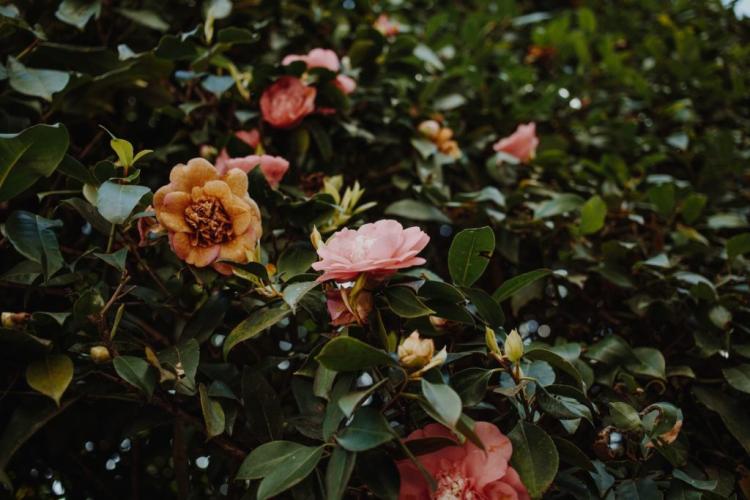
Camellia yellow and brown leaves: what’s wrong?
From time to time your camellia may not look at its best. Often it is not diseases that bother beautiful plants, but external abiotic circumstances. We clarify the possible causes.
The falling off of buds and leaves is mainly due to fluctuations in the water supply and large temperature differences in a short period of time. The camellia cannot adapt to the constantly changing conditions so that there are deficiency or excess reactions. Frequent repositioning can also be a reason for the fact that external conditions are constantly changing. Usually, however, it is maintenance errors or fluctuating weather conditions that tend to affect the plants.
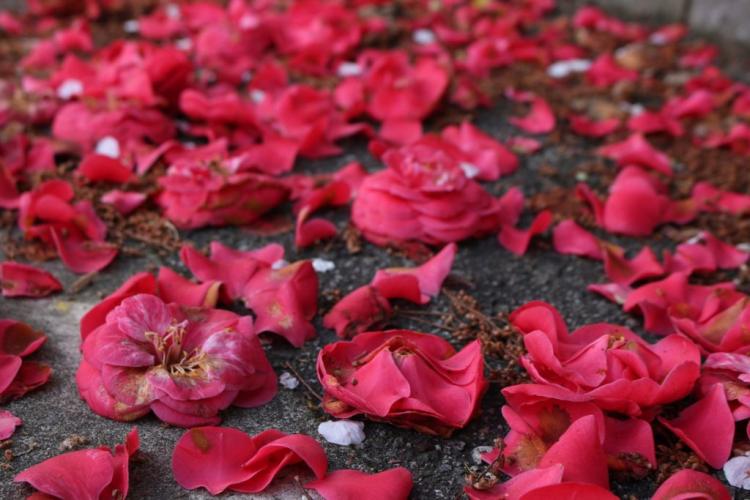
Appearances of rot in the camellia
Just as bud and leaf fall can be a symptom of incorrect care measures, so can rot. Excessive humidity and waterlogging and corresponding temperatures create perfect conditions for putrefaction processes. In addition, over-fertilization can cause the tissue to lose its resistance, which makes the plant more vulnerable.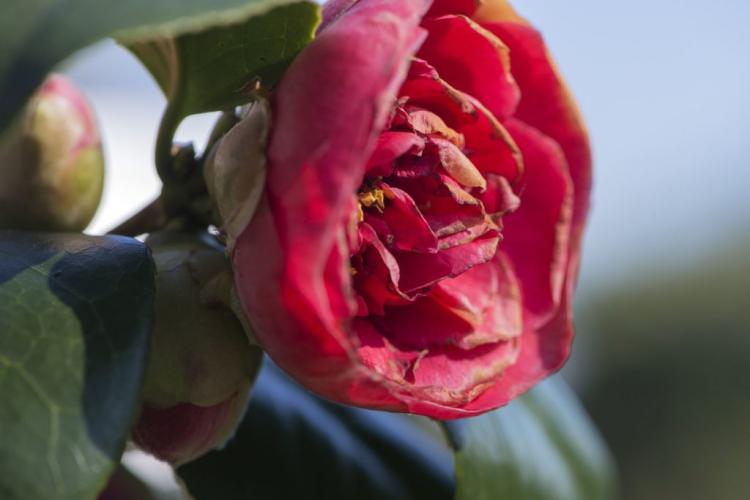
On the whole, the following applies: The camellia loses its leaves after two to three years, which is why occasional leaf fall is not a cause for concern. If the symptoms increase and there are no obvious reasons to be identified, it is advisable to first turn the adjusting screw of the care measures before immediately concluding that a pest infestation is possible.
So that your camellia is as robust and resistant to diseases as possible, you should fertilize the plant regularly. You can find out everything you need to know about fertilizing camellias in our special article.
Reference List:
- Camellia yellow mottle virus; (source reference link: http://ipm.ucanr.edu/PMG/GARDEN/PLANTS/DISEASES/camvirus.html)
- Camellia petal blight—Ciborinia camellia; (source reference link: http://ipm.ucanr.edu/PMG/GARDEN/PLANTS/DISEASES/campfbli.html)
- Camellia petal blight—Ciborinia camellia; (source reference link: http://ipm.ucanr.edu/PMG/GARDEN/PLANTS/DISEASES/campfbli.html)
- Camellia yellow mottle virus; (source reference link: http://ipm.ucanr.edu/PMG/GARDEN/PLANTS/DISEASES/camvirus.html)
